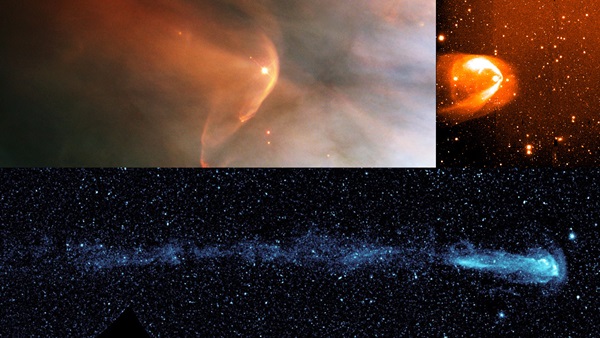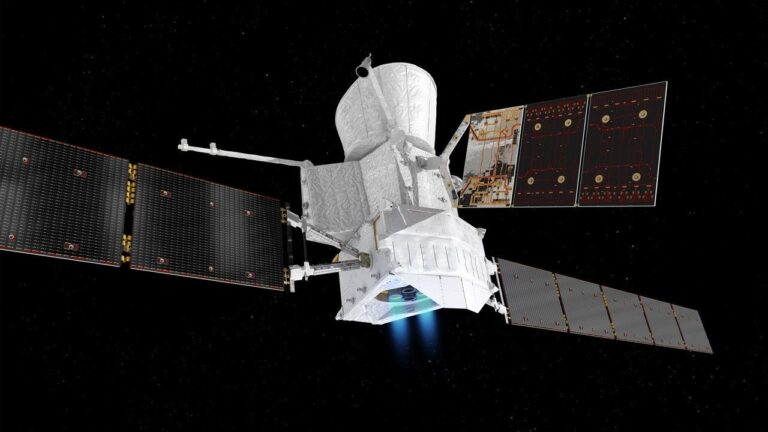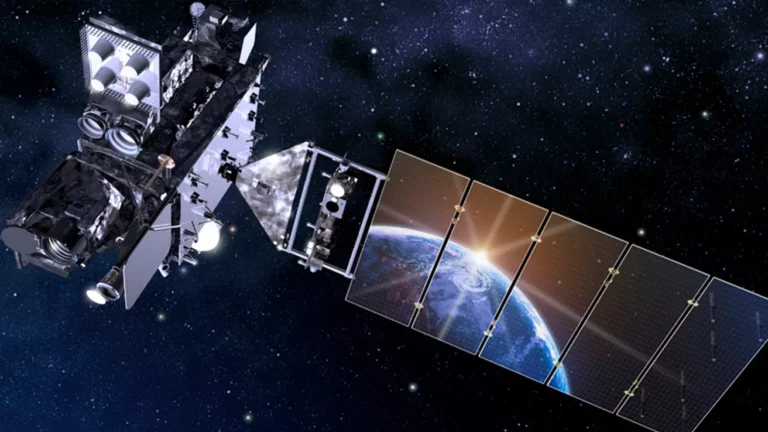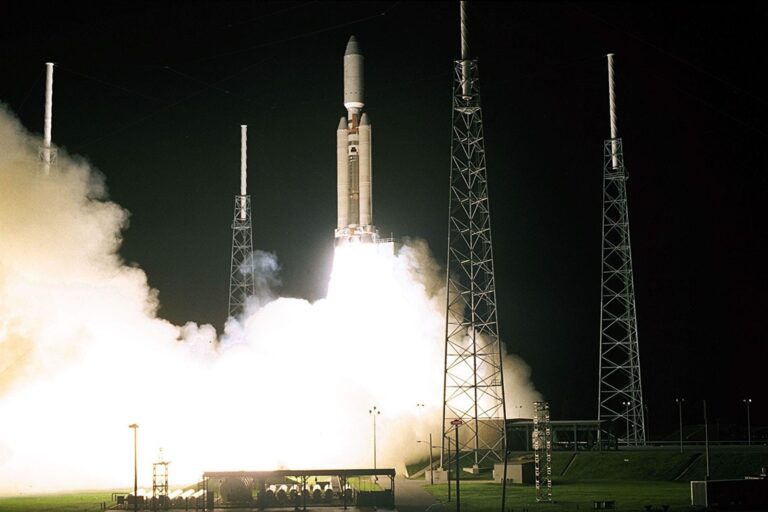Key Takeaways:
Researchers have long theorized that, like a comet, a “tail” trails the heliosphere, the giant bubble in which our solar system resides, as the heliosphere moves through interstellar space. The first IBEX images released in 2009 showed an unexpected ribbon of surprisingly high energetic neutral atom (ENA) emissions circling the upwind side of the solar system. With the collection of additional ENAs over the first year of observations, a structure dominated by lower-energy ENAs emerged, which was preliminarily identified as the heliotail. However, it was quite small and appeared to be offset from the downwind direction, possibly because of interactions from the galaxy’s external magnetic field.
As the next two years of IBEX data filled in the observational hole in the downwind direction, researchers found a second tail region to the side of the previously identified one. The IBEX team reoriented the IBEX maps and two similar, low-energy ENA structures became clearly visible straddling the downwind direction of the heliosphere, indicating structures that better resemble “lobes” than a single unified tail.
“We chose the term ‘lobes’ very carefully,” said Dave McComas, IBEX principal investigator and assistant vice president of the Space Science and Engineering Division at the Southwest Research Institute in San Antonio, Texas. “It may well be that these are separate structures bent back toward the downwind direction. However, we can’t say that for certain with the data we have today.”
The team adopted the nautical terms port and starboard to distinguish the lobes, as the heliosphere is the “vessel” that transports our solar system throughout the galaxy.
IBEX data show the heliotail is the region where the Sun’s million-mph solar wind flows down and ultimately escapes the heliosphere, slowly evaporating because of charge exchange. The slow solar wind heads down the tail in the port and starboard lobes at low- and mid-latitudes and, at least around the Sun’s minimum in solar activity, fast solar wind flows down it at high northern and southern latitudes.
“We’re seeing a heliotail that’s much flatter and broader than expected, with a slight tilt,” said McComas. “Imagine sitting on a beach ball. The ball gets flattened by the external forces and its cross section is oval instead of circular. That’s the effect the external magnetic field appears to be having on the heliotail.”
The IBEX spacecraft uses two novel ENA cameras to image and map the heliosphere’s global interaction, providing the first global views and new knowledge about our solar system’s interaction with interstellar space.
“We often think we know what we’re going to study in science, but the work sometimes takes us in unexpected directions,” said McComas. “That was certainly the case with this study, which started by simply trying to better quantify the small structure incorrectly identified as an ‘offset heliotail.’ The heliotail we found was much bigger and very different from what we expected.”











